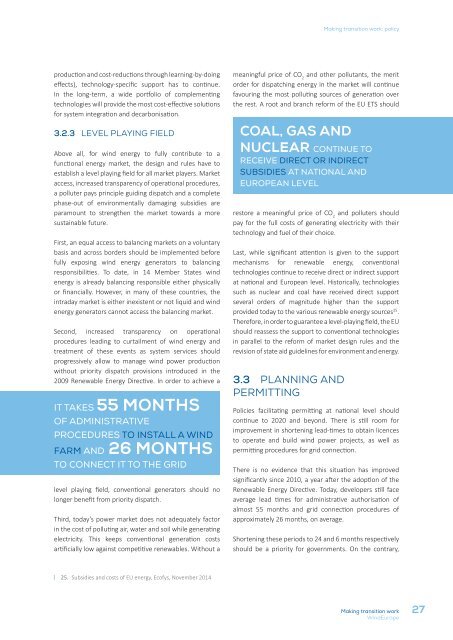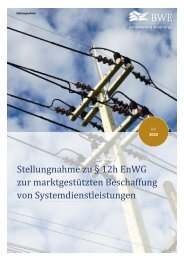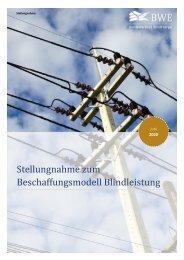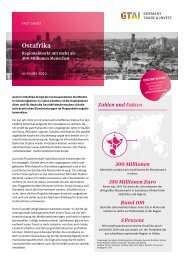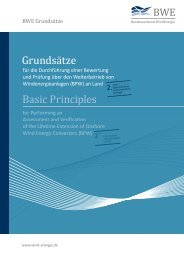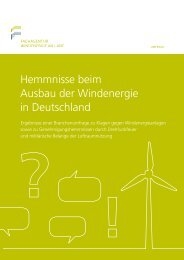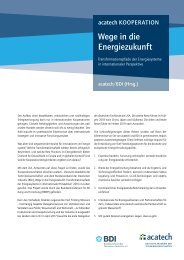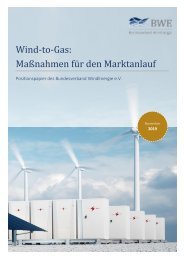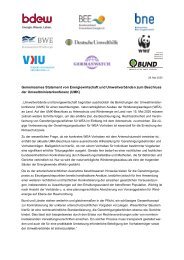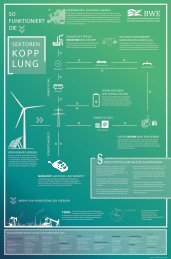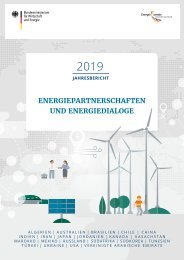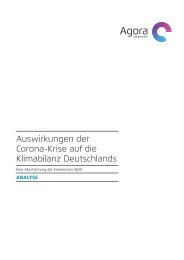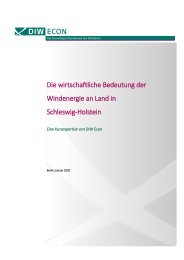Making transition work - Wind Europe
This report provides clear elements on how to make transition work in the coming decade. It provides recommendations to policymakers on how to facilitate a swift transformation of the energy system and considers the policies that will make Europe the best choice for those investing in renewables.
This report provides clear elements on how to make transition work in the coming decade. It provides recommendations to policymakers on how to facilitate a swift transformation of the energy system and considers the policies that will make Europe the best choice for those investing in renewables.
You also want an ePaper? Increase the reach of your titles
YUMPU automatically turns print PDFs into web optimized ePapers that Google loves.
<strong>Making</strong> <strong>transition</strong> <strong>work</strong>: policy<br />
production and cost-reductions through learning-by-doing<br />
effects), technology-specific support has to continue.<br />
In the long-term, a wide portfolio of complementing<br />
technologies will provide the most cost-effective solutions<br />
for system integration and decarbonisation.<br />
3.2.3 LEVEL PLAYING FIELD<br />
Above all, for wind energy to fully contribute to a<br />
functional energy market, the design and rules have to<br />
establish a level playing field for all market players. Market<br />
access, increased transparency of operational procedures,<br />
a polluter pays principle guiding dispatch and a complete<br />
phase-out of environmentally damaging subsidies are<br />
paramount to strengthen the market towards a more<br />
sustainable future.<br />
First, an equal access to balancing markets on a voluntary<br />
basis and across borders should be implemented before<br />
fully exposing wind energy generators to balancing<br />
responsibilities. To date, in 14 Member States wind<br />
energy is already balancing responsible either physically<br />
or financially. However, in many of these countries, the<br />
intraday market is either inexistent or not liquid and wind<br />
energy generators cannot access the balancing market.<br />
Second, increased transparency on operational<br />
procedures leading to curtailment of wind energy and<br />
treatment of these events as system services should<br />
progressively allow to manage wind power production<br />
without priority dispatch provisions introduced in the<br />
2009 Renewable Energy Directive. In order to achieve a<br />
IT TAKES 55 MONTHS<br />
OF ADMINISTRATIVE<br />
PROCEDURES TO INSTALL A WIND<br />
FARM AND 26 MONTHS<br />
TO CONNECT IT TO THE GRID<br />
level playing field, conventional generators should no<br />
longer benefit from priority dispatch.<br />
Third, today’s power market does not adequately factor<br />
in the cost of polluting air, water and soil while generating<br />
electricity. This keeps conventional generation costs<br />
artificially low against competitive renewables. Without a<br />
meaningful price of CO 2<br />
and other pollutants, the merit<br />
order for dispatching energy in the market will continue<br />
favouring the most polluting sources of generation over<br />
the rest. A root and branch reform of the EU ETS should<br />
COAL, GAS AND<br />
NUCLEAR CONTINUE TO<br />
RECEIVE DIRECT OR INDIRECT<br />
SUBSIDIES AT NATIONAL AND<br />
EUROPEAN LEVEL<br />
restore a meaningful price of CO 2<br />
and polluters should<br />
pay for the full costs of generating electricity with their<br />
technology and fuel of their choice.<br />
Last, while significant attention is given to the support<br />
mechanisms for renewable energy, conventional<br />
technologies continue to receive direct or indirect support<br />
at national and <strong>Europe</strong>an level. Historically, technologies<br />
such as nuclear and coal have received direct support<br />
several orders of magnitude higher than the support<br />
provided today to the various renewable energy sources 25 .<br />
Therefore, in order to guarantee a level-playing field, the EU<br />
should reassess the support to conventional technologies<br />
in parallel to the reform of market design rules and the<br />
revision of state aid guidelines for environment and energy.<br />
3.3 PLANNING AND<br />
PERMITTING<br />
Policies facilitating permitting at national level should<br />
continue to 2020 and beyond. There is still room for<br />
improvement in shortening lead-times to obtain licences<br />
to operate and build wind power projects, as well as<br />
permitting procedures for grid connection.<br />
There is no evidence that this situation has improved<br />
significantly since 2010, a year after the adoption of the<br />
Renewable Energy Directive. Today, developers still face<br />
average lead times for administrative authorisation of<br />
almost 55 months and grid connection procedures of<br />
approximately 26 months, on average.<br />
Shortening these periods to 24 and 6 months respectively<br />
should be a priority for governments. On the contrary,<br />
25. Subsidies and costs of EU energy, Ecofys, November 2014<br />
<strong>Making</strong> <strong>transition</strong> <strong>work</strong><br />
<strong>Wind</strong><strong>Europe</strong><br />
27


